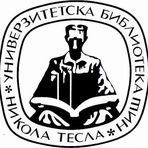Title
Unapređenje procene kvaliteta podataka o smrtnom ishodu u Srbiji određivanjem indeksa performansi vitalne statistike
Creator
Anđelković-Apostolović, Marija, 1984-
CONOR:
72600841
Copyright date
2024
Object Links
Select license
Autorstvo-Nekomercijalno-Bez prerade 3.0 Srbija (CC BY-NC-ND 3.0)
License description
Dozvoljavate samo preuzimanje i distribuciju dela, ako/dok se pravilno naznačava ime autora, bez ikakvih promena dela i bez prava komercijalnog korišćenja dela. Ova licenca je najstroža CC licenca. Osnovni opis Licence: http://creativecommons.org/licenses/by-nc-nd/3.0/rs/deed.sr_LATN. Sadržaj ugovora u celini: http://creativecommons.org/licenses/by-nc-nd/3.0/rs/legalcode.sr-Latn
Language
Serbian
Cobiss-ID
Theses Type
Doktorska disertacija
description
Datum odbrane: 10.12.2024.
Other responsibilities
Academic Expertise
Medicinske nauke
University
Univerzitet u Nišu
Faculty
Medicinski fakultet
Group
Katedra za opšte obrazovne predmete
Alternative title
Improving the quality assessment of mortality data in Serbia by determining the vital statistics performance index
Publisher
[M. R. Anđelković-Apostolović]
Format
142 lista
description
Bibliografija: listovi 118-132.
Beleška o autoru: list 142.
description
Medical statistics and informatics
Abstract (en)
The traditional approach to mortality quality assessment was based on evaluating
the completeness of vital statistics and the proportion of R diagnoses, while the new
principle determines the Vital Statistics Performance Index for Quality-VSPI(Q).
The goals of the doctoral dissertation are to improve the assessment of the quality
of data on death outcomes by determining the VSPI(Q) index in Serbia from 2005
to 2019 and assessing the level of knowledge and attitudes of physicians when
filling out the death certificate (DC).
In the first part of the research, the ANACONDA software package was used to
assess the quality of death data, which analyses the accuracy and completeness of
mortality data with demographic and epidemiological global estimates. In the
second part of the research, a modified Mid-America Heart Institute (MAHI) Death
Certificate Scoring System determined the assessment of physicians' knowledge.
The mortality data in Serbia was assessed as medium quality for the entire fifteenyear
period (VSPI(Q) score of 67.2%). A constant increase in the quality of
mortality data was based on the increase in the VSPI(Q) score from 55.6 (medium
quality) to 70.2 (high quality) in the follow-up period. It was found that 24.2%
belonged to garbage codes (GC), while 18.5% belonged to insufficiently specified
causes of death. Death due to external factors is represented by 0.8%, below the
global average of 5-10%. According to the GC typology, the most common error
belongs to category 3 (24.7%), representing the intermediate cause of death. The
most common ill-defined diagnosis for both sexes is nonspecific cardiomyopathy
(I42.9). As a result of the ANACONDA analysis, 9.2% of GC in females and 9.1%
of GC in males were successfully redistributed. A strong positive correlation was
found between the VSPI(Q) score and sociodemographic indices for Serbia. The
physician's knowledge of coding DC is suboptimal for all three cases. The optimal
level of knowledge was achieved by 51.4% of physicians for coding the natural
death, 42.3% for coding the violent death, and 19.5% for coding the undetermined
death. Predictors of better knowledge are education, frequency of filling out DCs,
and the number of completed DCs.
The results indicate an increase in the quality of mortality data in Serbia and a large
percentage of GC in the fifteen years, reflected in physicians' suboptimal
knowledge. For this purpose, it is necessary to adapt education and focus on the
critical aspects of each cause of death.
Authors Key words
mortalitetna statistika, potvrda o smrti, VSPI(Q), garbage kodovi, Srbija
Authors Key words
mortality statistics, death certificate, VSPI(Q), garbage codes, Serbia
Classification
616‑036.8:311(497.11)(043.3)
Subject
B110
Type
Tekst
Abstract (en)
The traditional approach to mortality quality assessment was based on evaluating
the completeness of vital statistics and the proportion of R diagnoses, while the new
principle determines the Vital Statistics Performance Index for Quality-VSPI(Q).
The goals of the doctoral dissertation are to improve the assessment of the quality
of data on death outcomes by determining the VSPI(Q) index in Serbia from 2005
to 2019 and assessing the level of knowledge and attitudes of physicians when
filling out the death certificate (DC).
In the first part of the research, the ANACONDA software package was used to
assess the quality of death data, which analyses the accuracy and completeness of
mortality data with demographic and epidemiological global estimates. In the
second part of the research, a modified Mid-America Heart Institute (MAHI) Death
Certificate Scoring System determined the assessment of physicians' knowledge.
The mortality data in Serbia was assessed as medium quality for the entire fifteenyear
period (VSPI(Q) score of 67.2%). A constant increase in the quality of
mortality data was based on the increase in the VSPI(Q) score from 55.6 (medium
quality) to 70.2 (high quality) in the follow-up period. It was found that 24.2%
belonged to garbage codes (GC), while 18.5% belonged to insufficiently specified
causes of death. Death due to external factors is represented by 0.8%, below the
global average of 5-10%. According to the GC typology, the most common error
belongs to category 3 (24.7%), representing the intermediate cause of death. The
most common ill-defined diagnosis for both sexes is nonspecific cardiomyopathy
(I42.9). As a result of the ANACONDA analysis, 9.2% of GC in females and 9.1%
of GC in males were successfully redistributed. A strong positive correlation was
found between the VSPI(Q) score and sociodemographic indices for Serbia. The
physician's knowledge of coding DC is suboptimal for all three cases. The optimal
level of knowledge was achieved by 51.4% of physicians for coding the natural
death, 42.3% for coding the violent death, and 19.5% for coding the undetermined
death. Predictors of better knowledge are education, frequency of filling out DCs,
and the number of completed DCs.
The results indicate an increase in the quality of mortality data in Serbia and a large
percentage of GC in the fifteen years, reflected in physicians' suboptimal
knowledge. For this purpose, it is necessary to adapt education and focus on the
critical aspects of each cause of death.
“Data exchange” service offers individual users metadata transfer in several different formats. Citation formats are offered for transfers in texts as for the transfer into internet pages. Citation formats include permanent links that guarantee access to cited sources. For use are commonly structured metadata schemes : Dublin Core xml and ETUB-MS xml, local adaptation of international ETD-MS scheme intended for use in academic documents.


